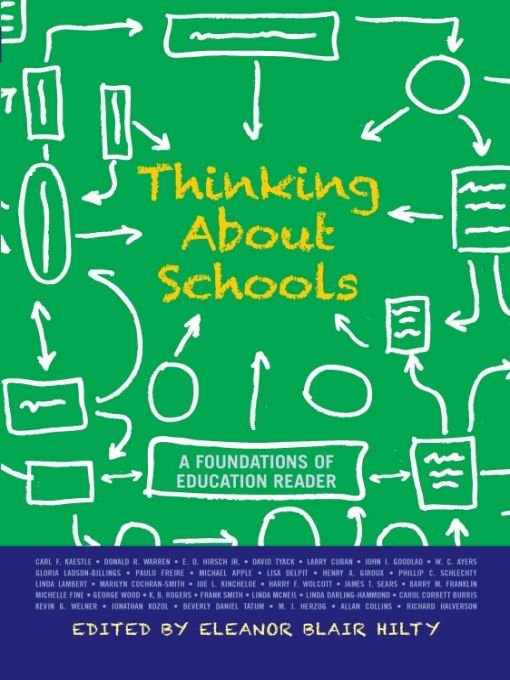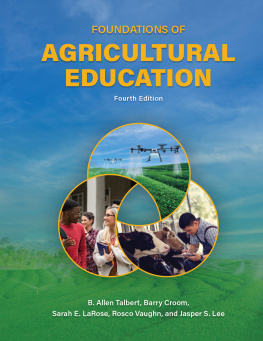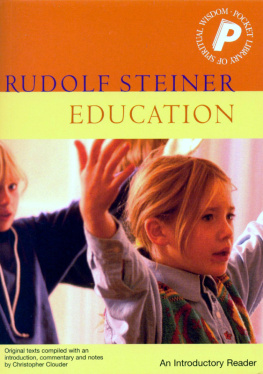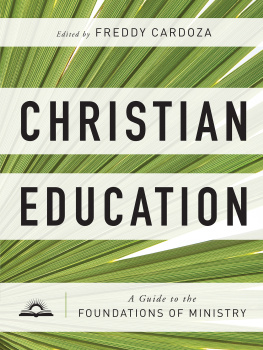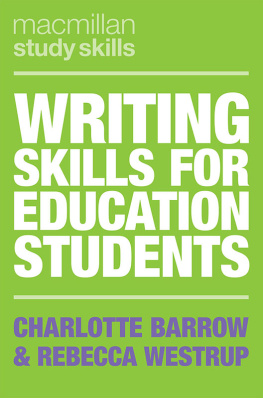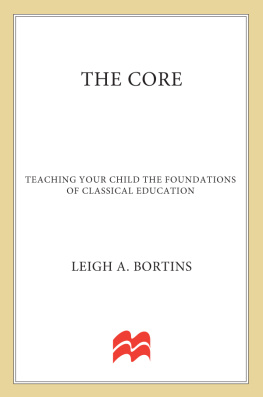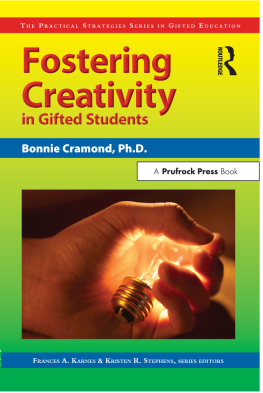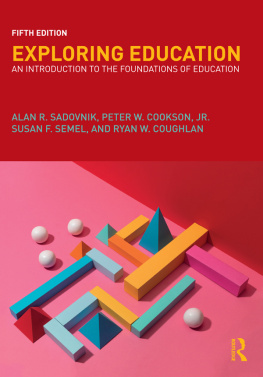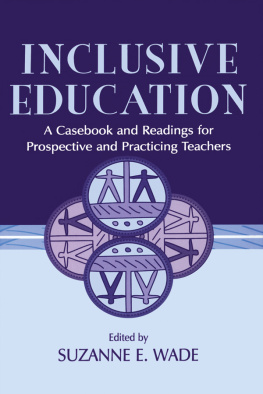Table of Contents
To Taylor and Leonard
the greatest loves of my life. Your loyalty and support have
sustained me through many storms.
And, to Richard Wisneiwski and Clinton B. Allison
my greatest teachers.
Your influence on my thinking about schools
is immeasurable. Thank you.
Preface
I started school in 1960. I attended a typical large, urban school in Memphis, Tennessee. The school, Sherwood Elementary, was a concrete fortress that resembled a prison more than a place for young children to come to be educated. One of my earliest memories of school has to do with a comment on the back of my first grade report card; I still have that report card in a frame in my office. My teacher wrote the following: Eleanor Jane never smiles. When my parents questioned me about this phenomenon, I replied that there is nothing to smile about at school. Through the years, my sentiments about school did not change. I found schools to be generally unchallenging, boring, and staffed with people who seemed more intent on enforcing rules than actually teaching. Of course there were exceptions, but those wonderful people stood out as different from the others, not the norm. I hated school; my grades were mediocre, and I dreamed of the day when I would finally be free from the shackles of schooling and education.
Of course there is a bit of irony in the fact that I have spent the larger part of my life in schools: working in schools; talking about schools; and, yes, thinking about schools every day for most of my adult life. I often talk to students about why they want to become teachers. There always seem to be two groups of individuals in my classes: those who loved school and want to be just like the teachers who inspired them, and those who hated school and believe they can do a better job of creating schools that are filled with joy and excitement about teaching and learning. Interestingly, throughout both of these groups are poignant stories of good and bad teachers who will never be forgotten. The preceding exercise, I hope, helps students begin to think about how prior experiences influence their values and beliefs about teaching and learning in powerful ways. Do we attempt to imitate and become the teachers whom we loved and admired? Or do we counter unfortunate experiences by becoming the exact opposite of those teachers whom we despised? Challenging students to consider where they have been educationally and where they want to go in the future is an important part, I believe, of making the successful transition from student behind the desk to teacher in front of the classroom, a transition that must be filled with critical inquiry, dialogue, and a consideration of teaching and learning from multiple perspectives. In the final analysis, however, it is up to each individual to think about who he or she will be as a teacher and what experiences will one day be woven into the rich tapestry of her or his professional life.
So here I am trying to change the world by teaching teachers. I have never regretted going into education; I am just as passionate now about schools and learning as I was thirty years ago when I began teaching. The only difference today is my unwavering commitment to equity and justice in schools and classrooms, a commitment to what I believe is not negotiable but rather, the only right and moral thing to do. Teachers do change lives. I believe that under the right circumstances, schools can be exciting places in which a love of learning can be nurtured and minds can be opened to possibilities never before imagined. But I am painfully aware that schools can also be places in which children are denied access to opportunities, knowledge, and resources that are prerequisite to even basic notions regarding a good education. I believe that teachers do have the power to change the world, one student at a time, and I am hopeful that some of the ideas in this book will help students to better understand where we have been and where we must go in the future if we are to achieve our goals for better teachers and schools in America.
Eleanor Blair Hilty
Eleanor Blair Hilty
Introduction
The Questions That Guide Our Practice
One of the problems plaguing our efforts to reform or re-vision schools and education is the fact that everyone is an expert on education. Most people have spent significant amounts of time sitting in classrooms and participating in educational efforts; thus, they believe that they are qualified to make suggestions and judgments about what constitutes a good education. Few people would suggest to a doctor that he or she should do things the way they used to be done ten or twenty years ago; however, I frequently hear the suggestion that schools should revert to the practices of an earlier generation. Defining good education within the context of past practices fails to acknowledge a contemporary reality that is quite different from previous eras. We live in a global, multicultural world in which students are exposed to ideas that extend beyond the traditional classroom in a typical school. It is imperative that we spend more time defining the problems of today before we begin to articulate and propose solutions that will have a lasting impact on contemporary students. If we dont ask the right questions, we wont get the right answers, and we wont ever ask the right questions if we dont spend significant amounts of time participating in attempts to understand and define the problems that we face from multiple perspectives. There are no easy answers, no easy solutions to the problems that plague our schools.
George and Louise Spindler (2000), educational anthropologists, suggested many years ago that it was important for us to make the familiar strange, and the strange familiar. Too often our thinking about the schools is blurred by the familiarity that we all bring to school settings. American schools are unique in many ways, but we seldom step out of our comfort zones to examine how strange some of our practices may be when compared with those of schools in other parts of the world. By the same token, we often look at nontraditional or alternative educational approaches as too strange or not appropriate for American schools that are based on earlier models of good schools and good teaching. The chasm created by these misguided perceptions prevents us from considering multiple models of teaching and learning that might better meet the needs of a rapidly changing student population, a group that increasingly doesnt look or act in a way that is familiar to traditional educators.
Most of todays educators would agree that traditional approaches to teaching and learning are not working for a large number of twenty-first-century students. Communities, families, and students have changed, and we are not meeting their most basic educational needs. Rather than simply defining our problems as student problems, we need to acknowledge that many of the issues that we face today are school problems associated with the organization and delivery of educational programs that are ineffective in meeting student needs. Schools must respond to the needs of the students we serve. If we are not meeting student needs, we are not doing our jobs! A static model of schooling that isnt responsive to changing societal norms will not endure. Educators must be prepared to look at fluid, dynamic models of schooling that challenge us to make the familiar strange, and the strange familiar. Schools need to be places in which both students and teachers are encouraged to think outside the box when thinking about teaching and learning. I hope the ideas presented in this book will generate sufficient cognitive dissonance to cause students to begin the process of asking hard questions about schools and refusing to accept easy answers.

